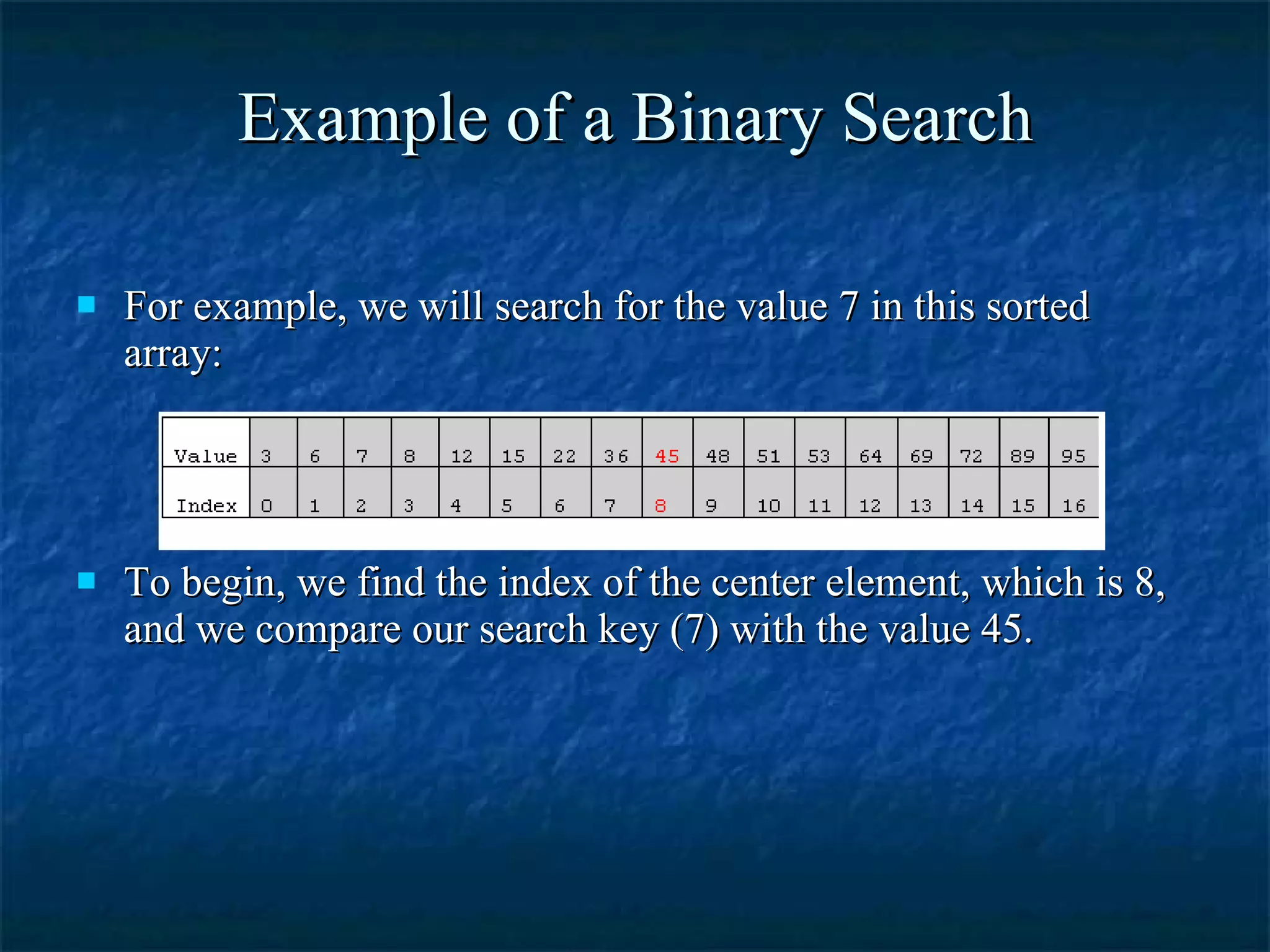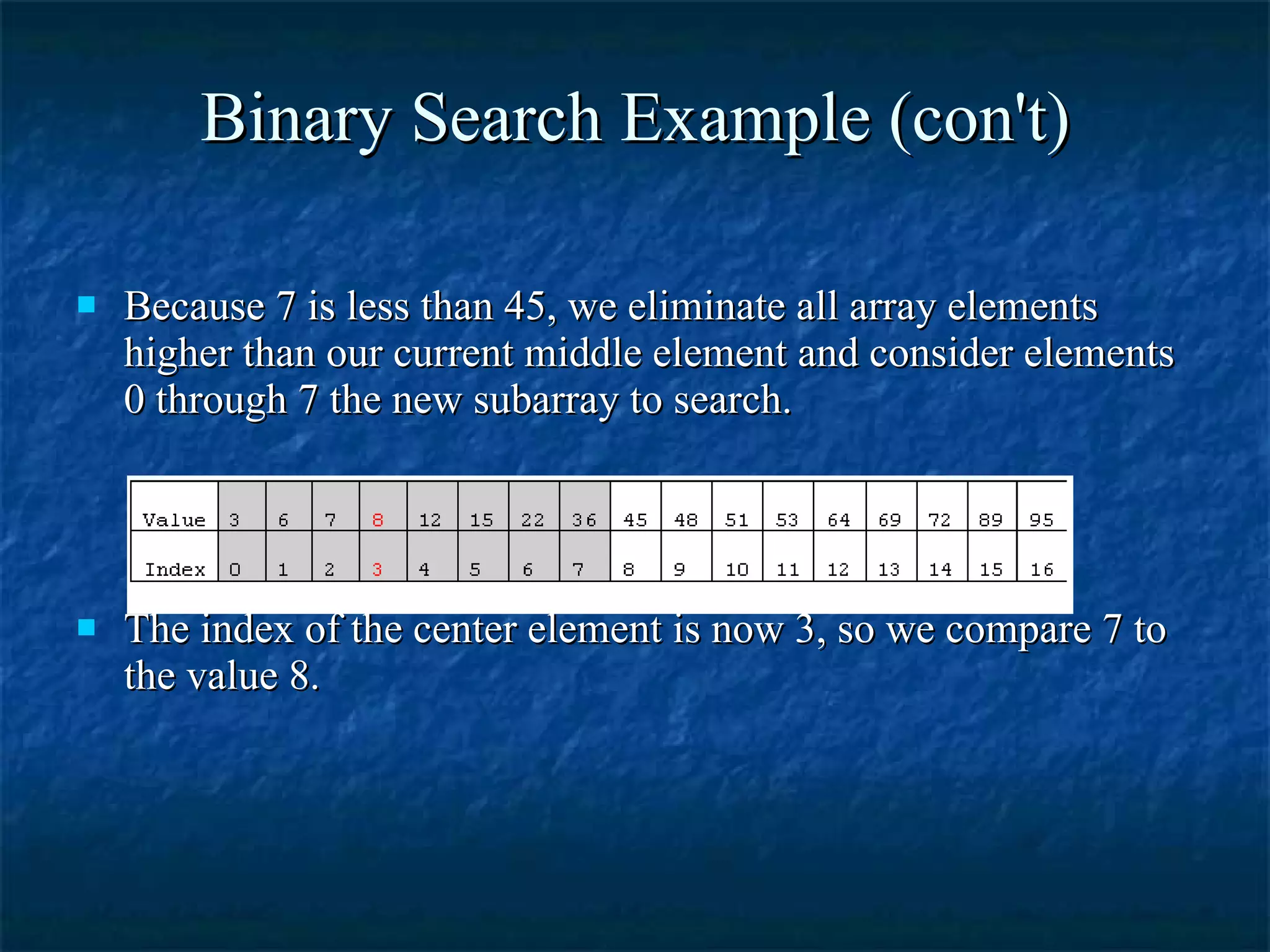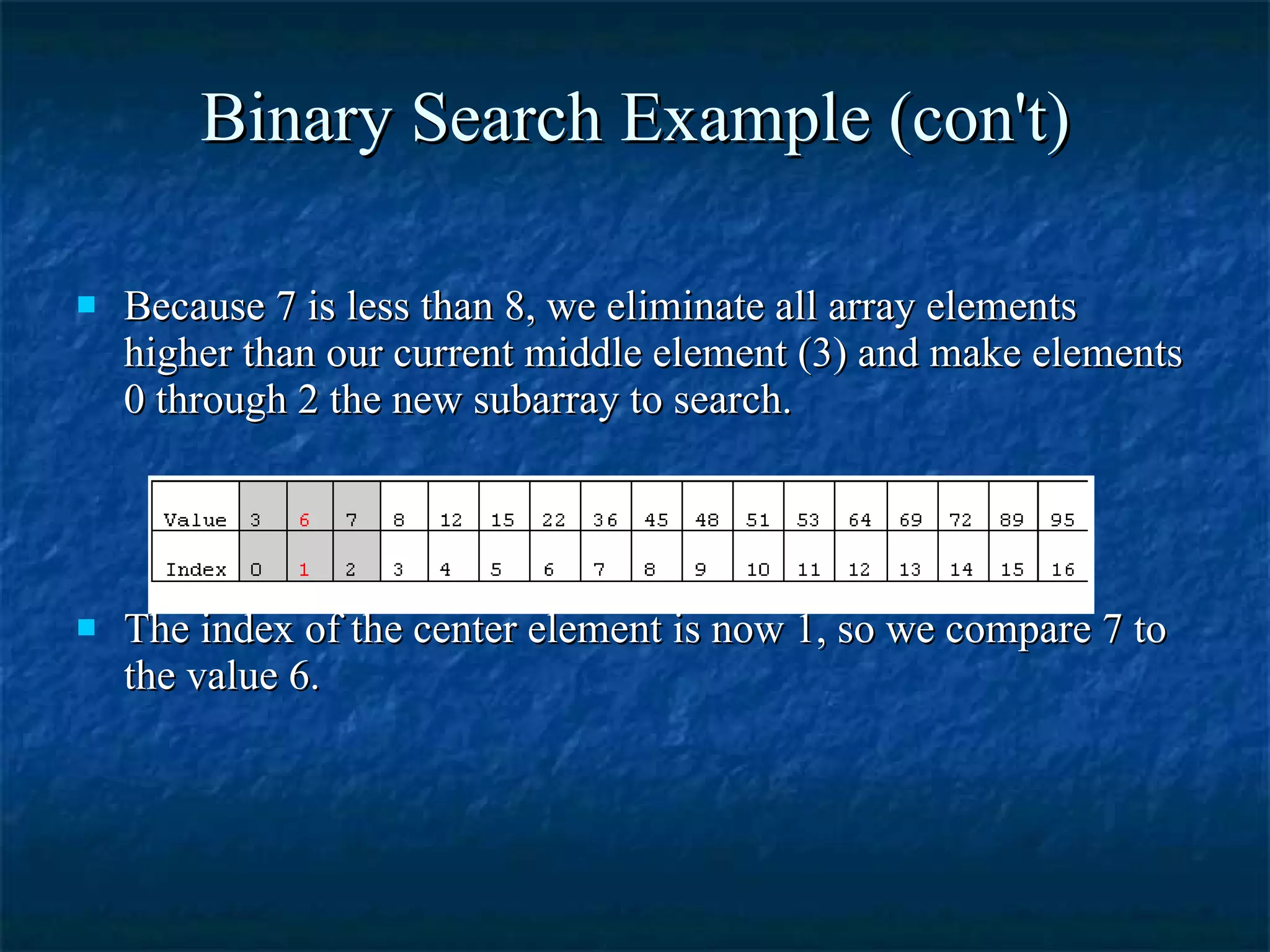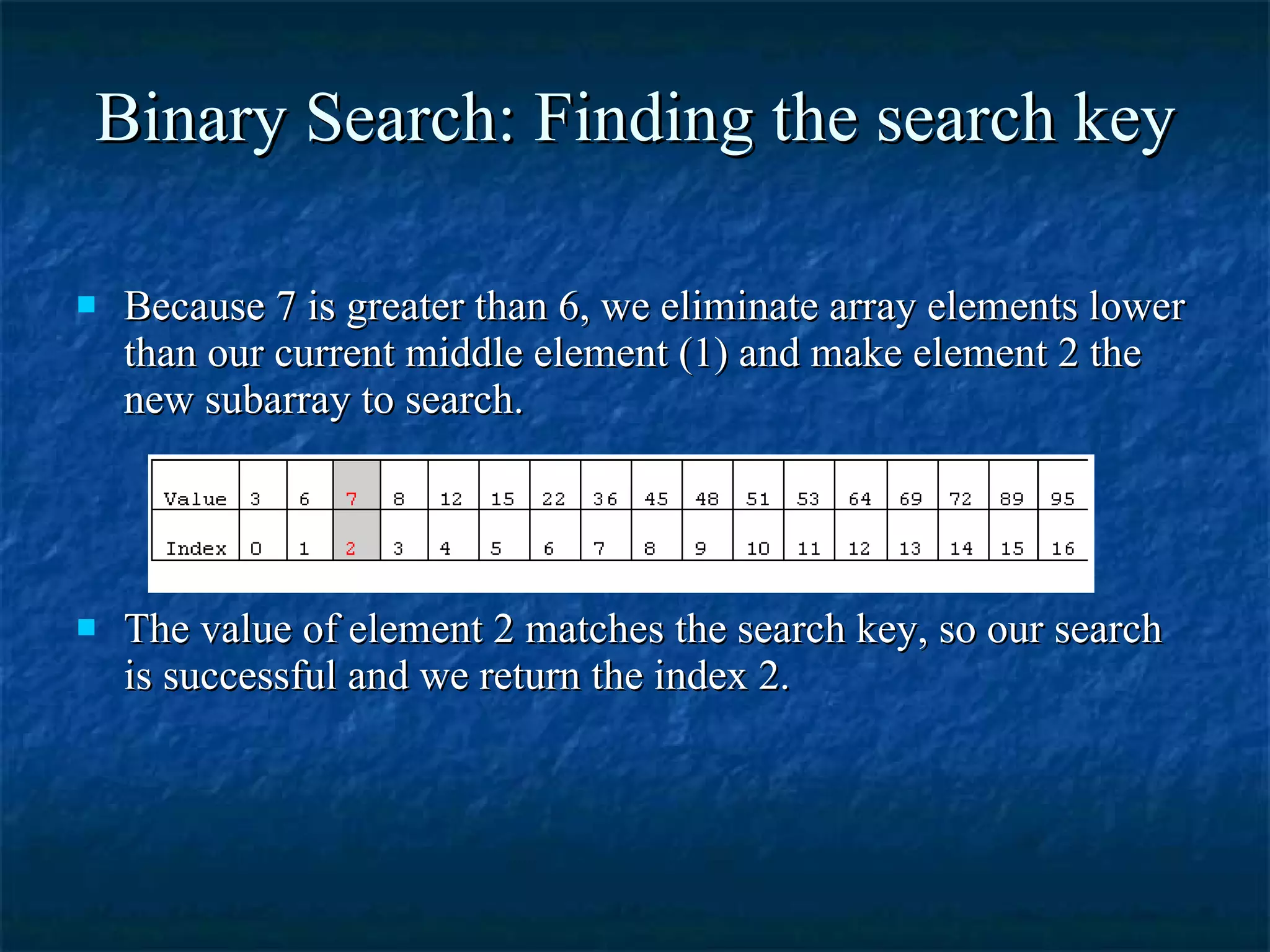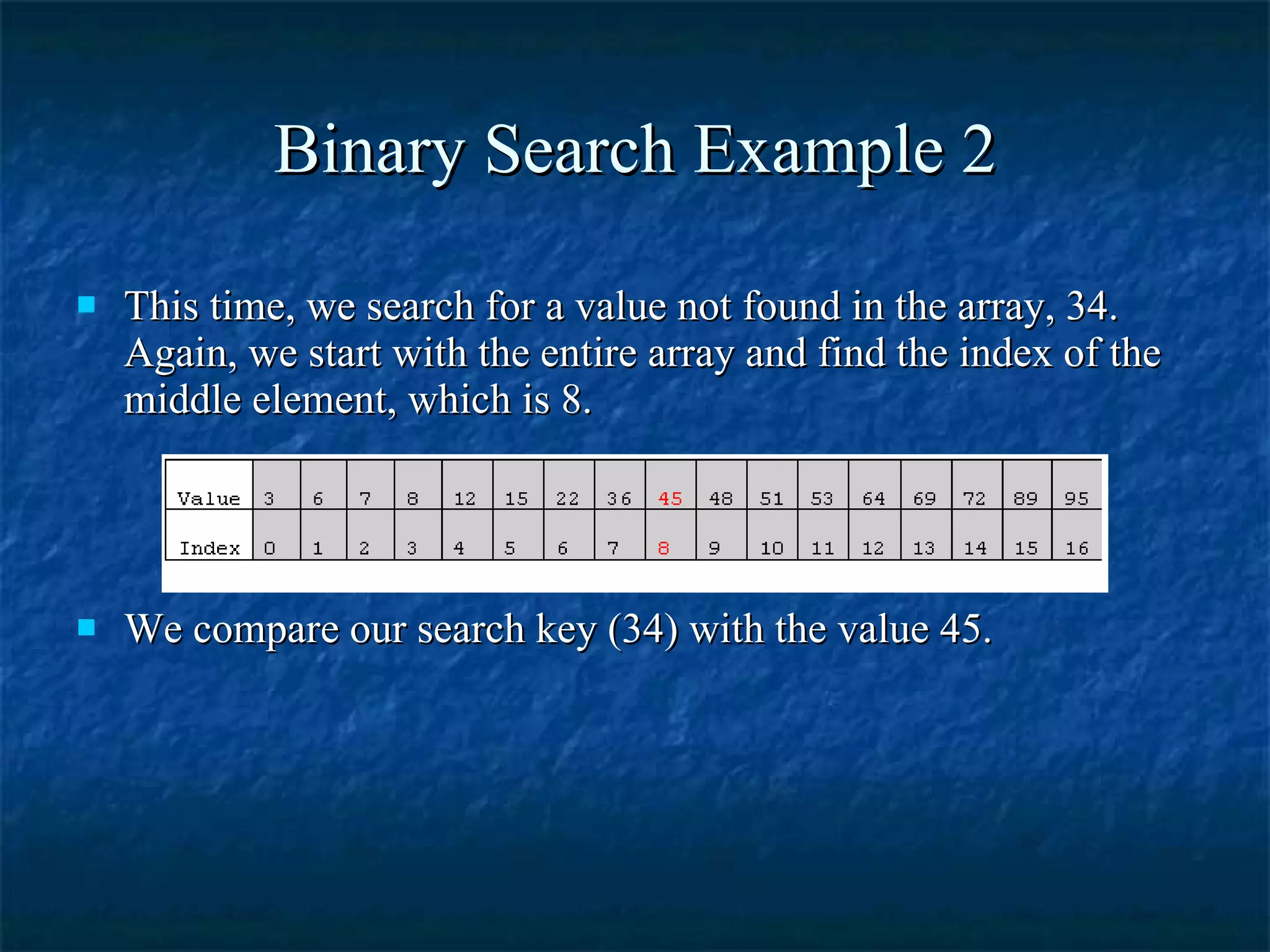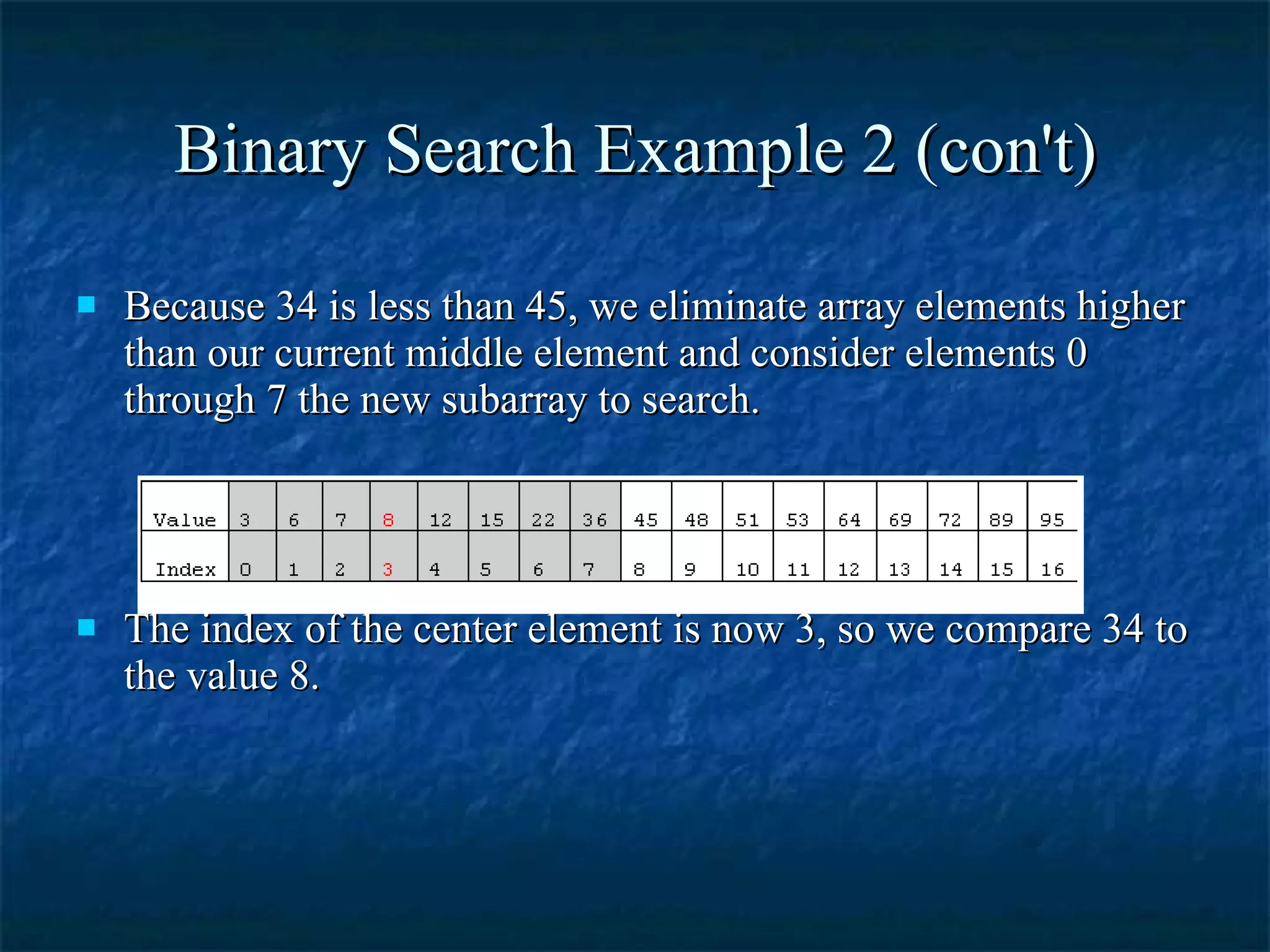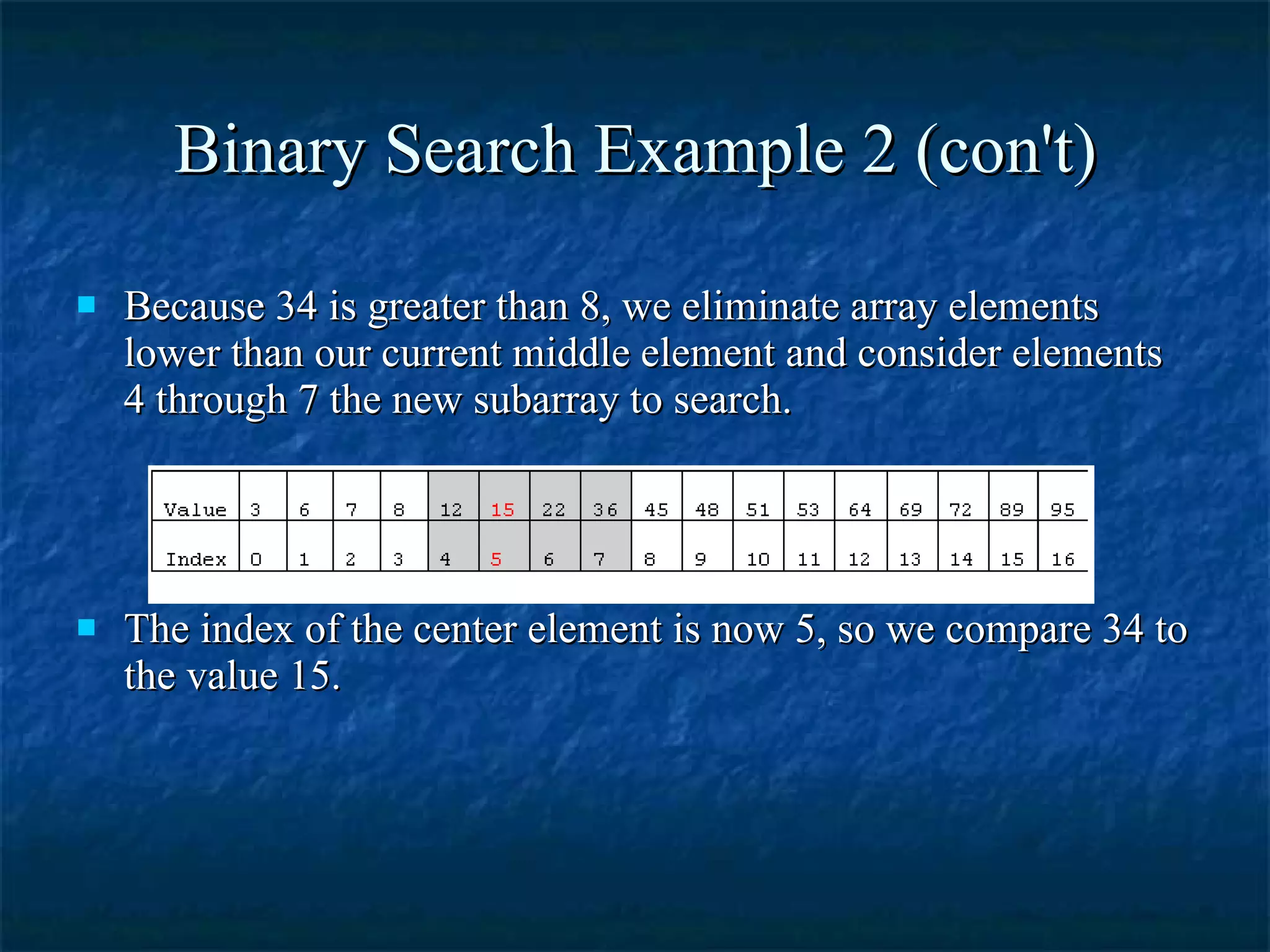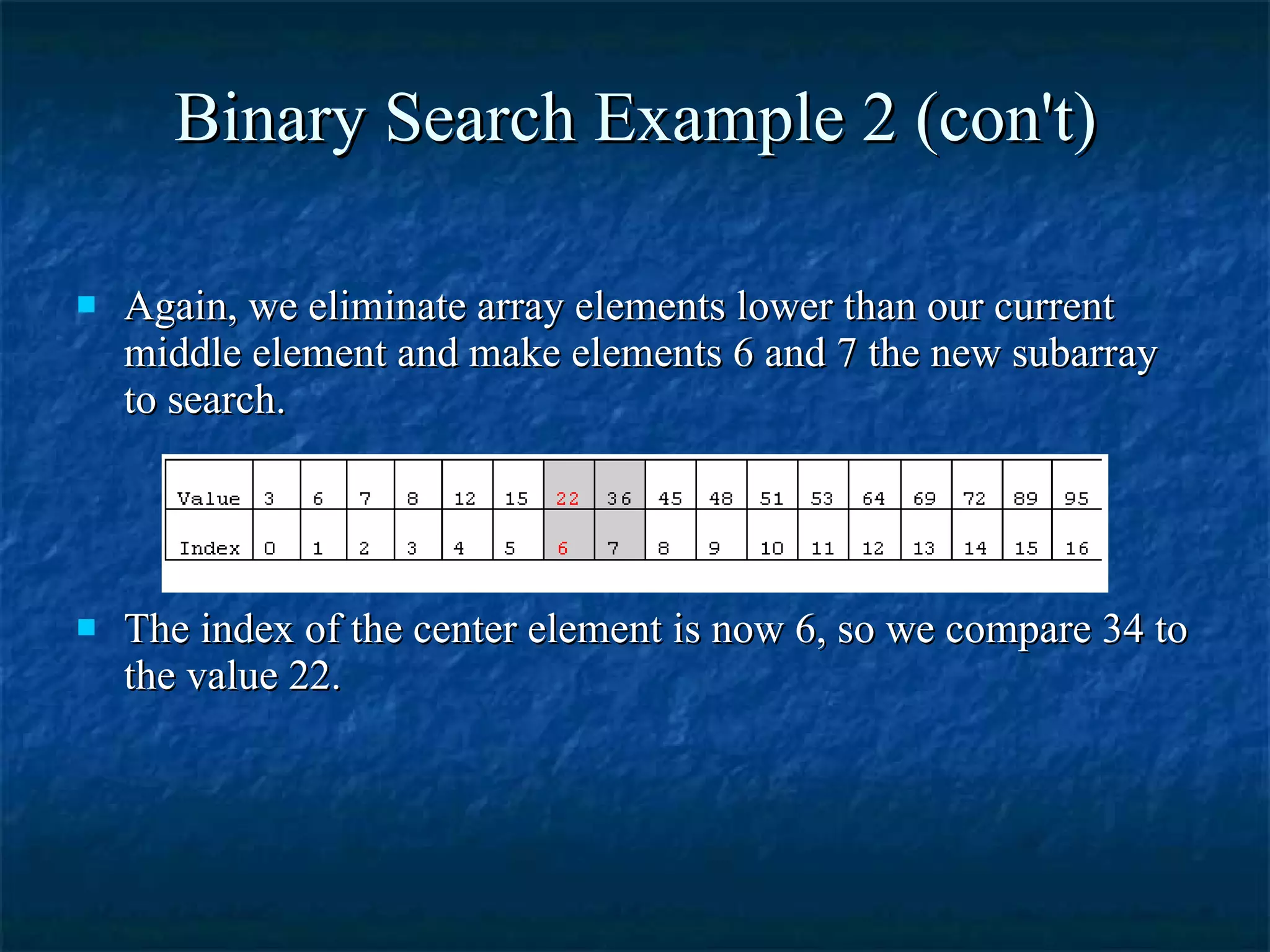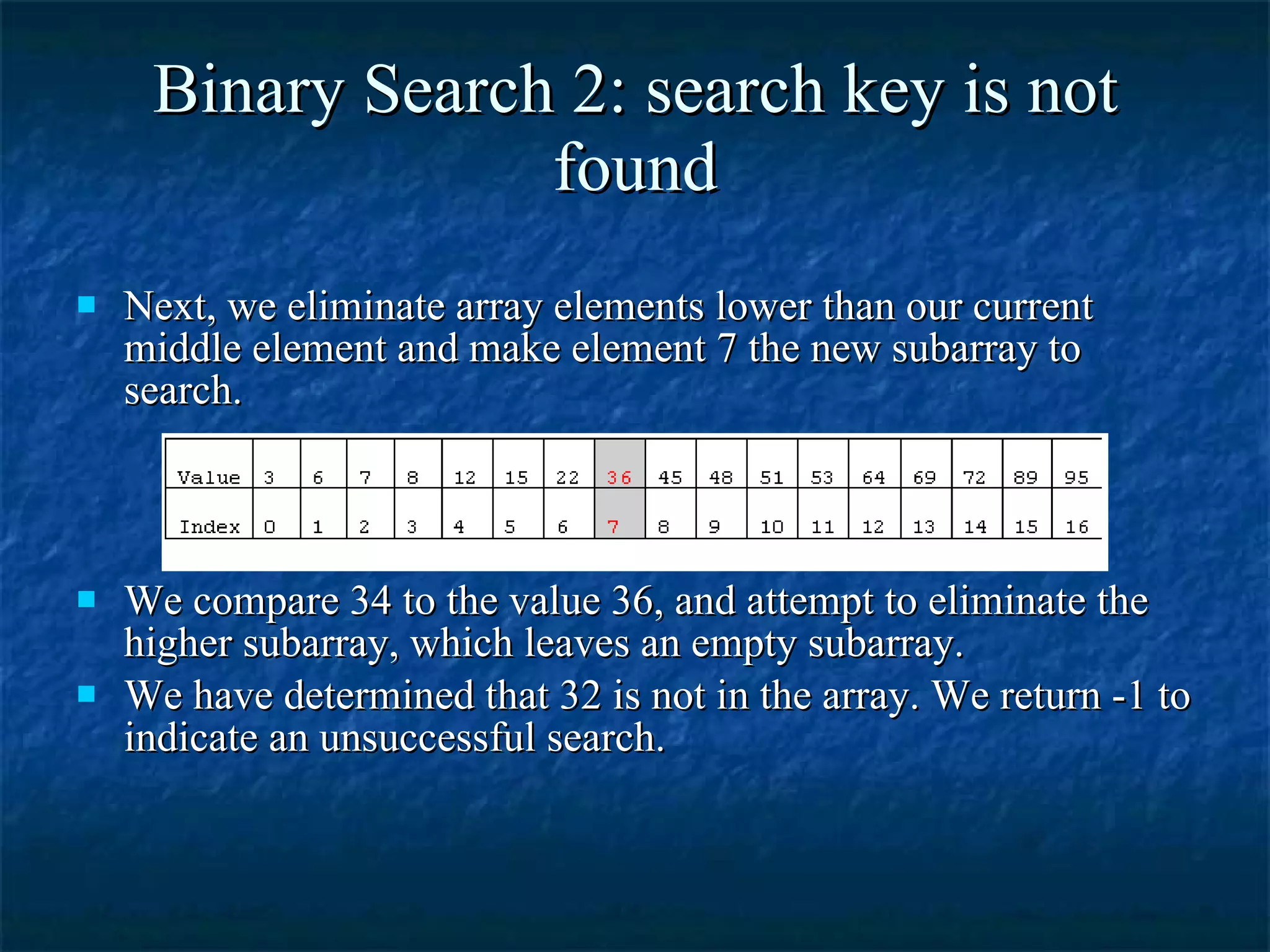An array is a collection of variables of the same type that are referenced using a common name and contiguous memory locations. One-dimensional arrays allow storing multiple variables of the same type under a single variable name. Linear/sequential search compares each element to the search key while binary search divides the array in half at each step to find the search key faster than linear search.
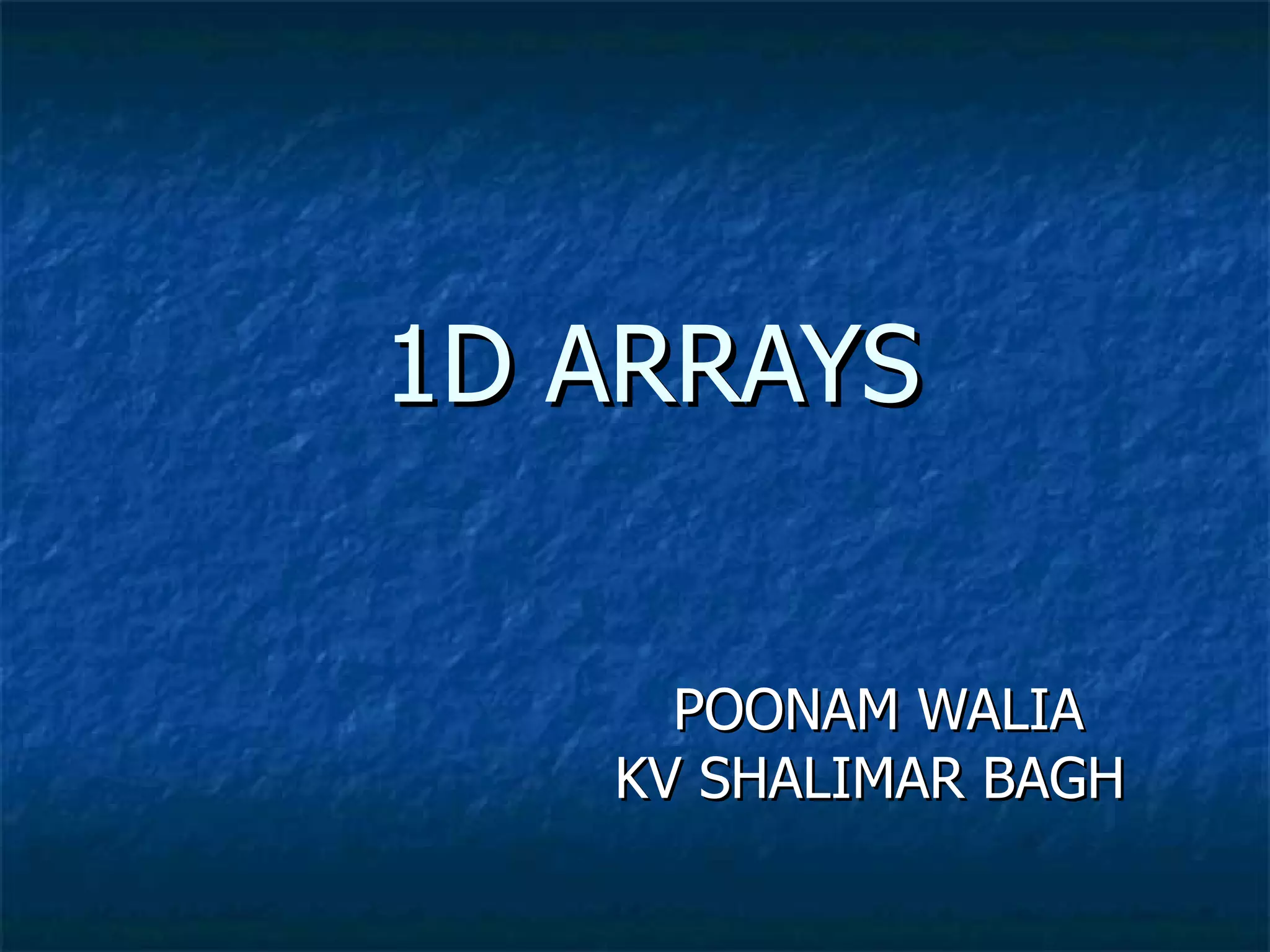
![WHAT IS AN ARRAY An array is a derived data type ( derived from fundamental data type ) It is a collection of variables of the same type that are referenced by a common name. If the name of an array of 10 elements is ARY, then its elements will be referenced as : ARY[0], ARY[1], ARY[2], ………ARY[9] Consist of contiguous memory locations. Lowest address corresponds to first element](https://image.slidesharecdn.com/1darrays-090930010004-phpapp01/75/1-D-Arrays-in-C-2-2048.jpg)
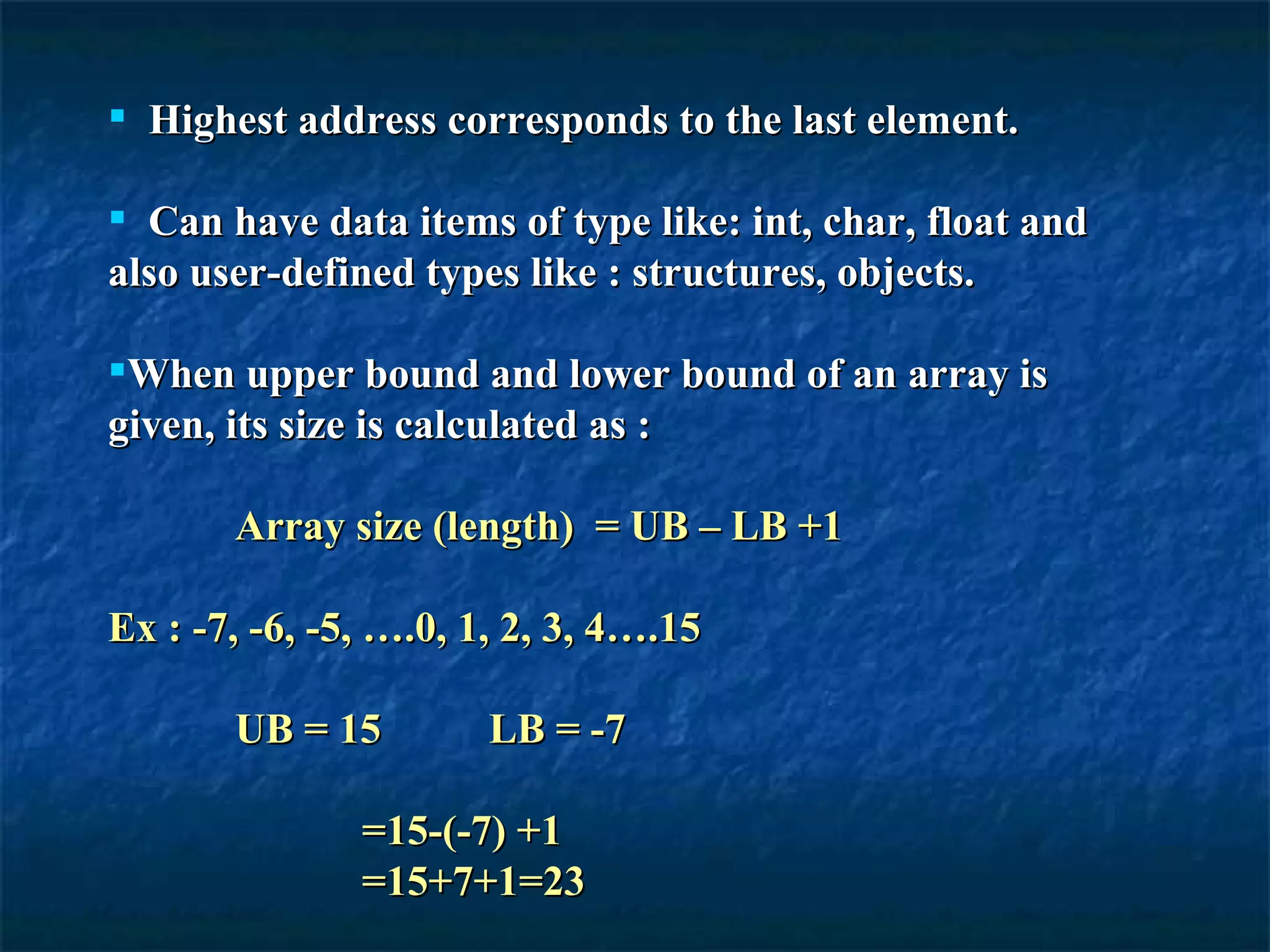
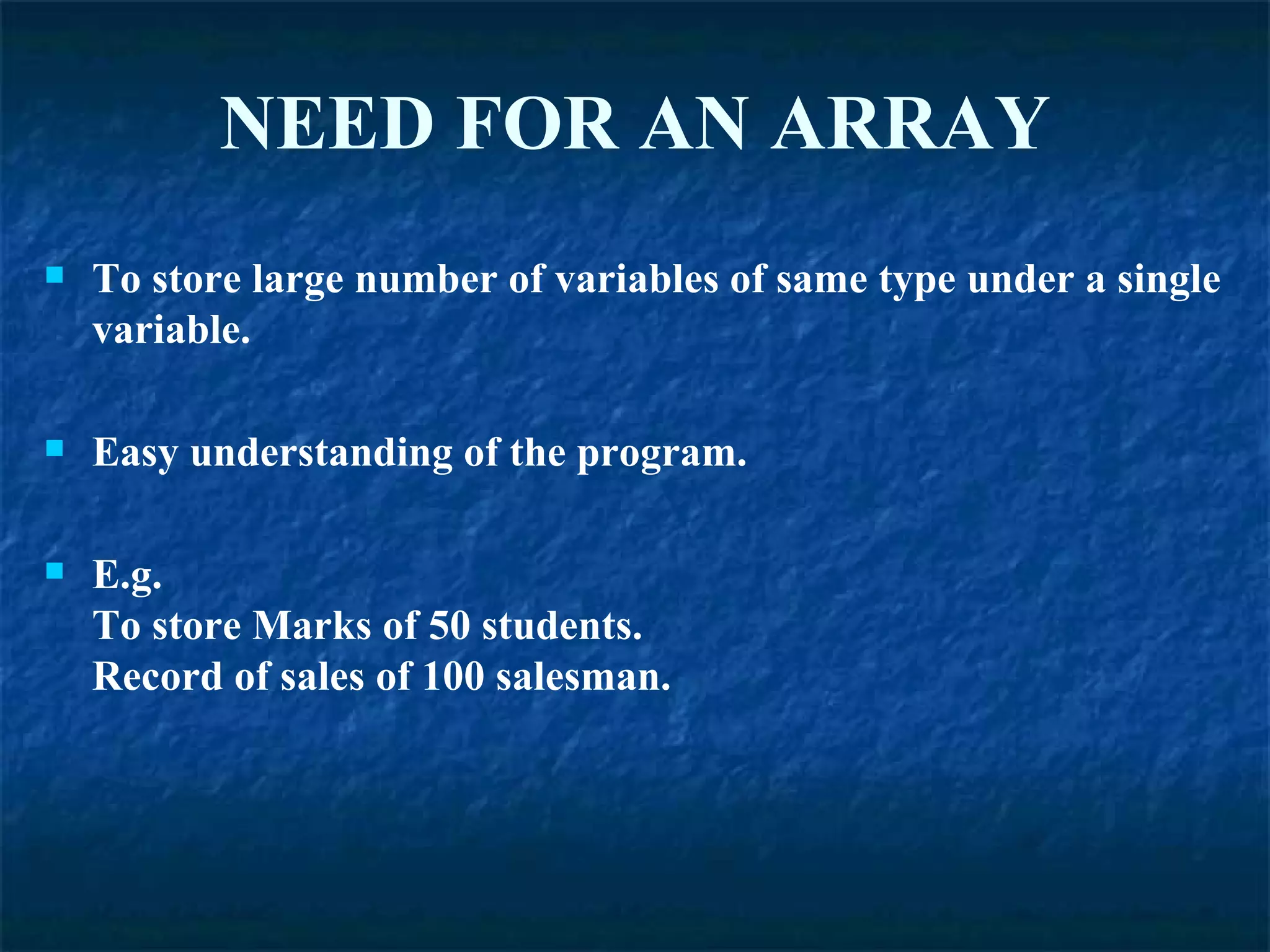
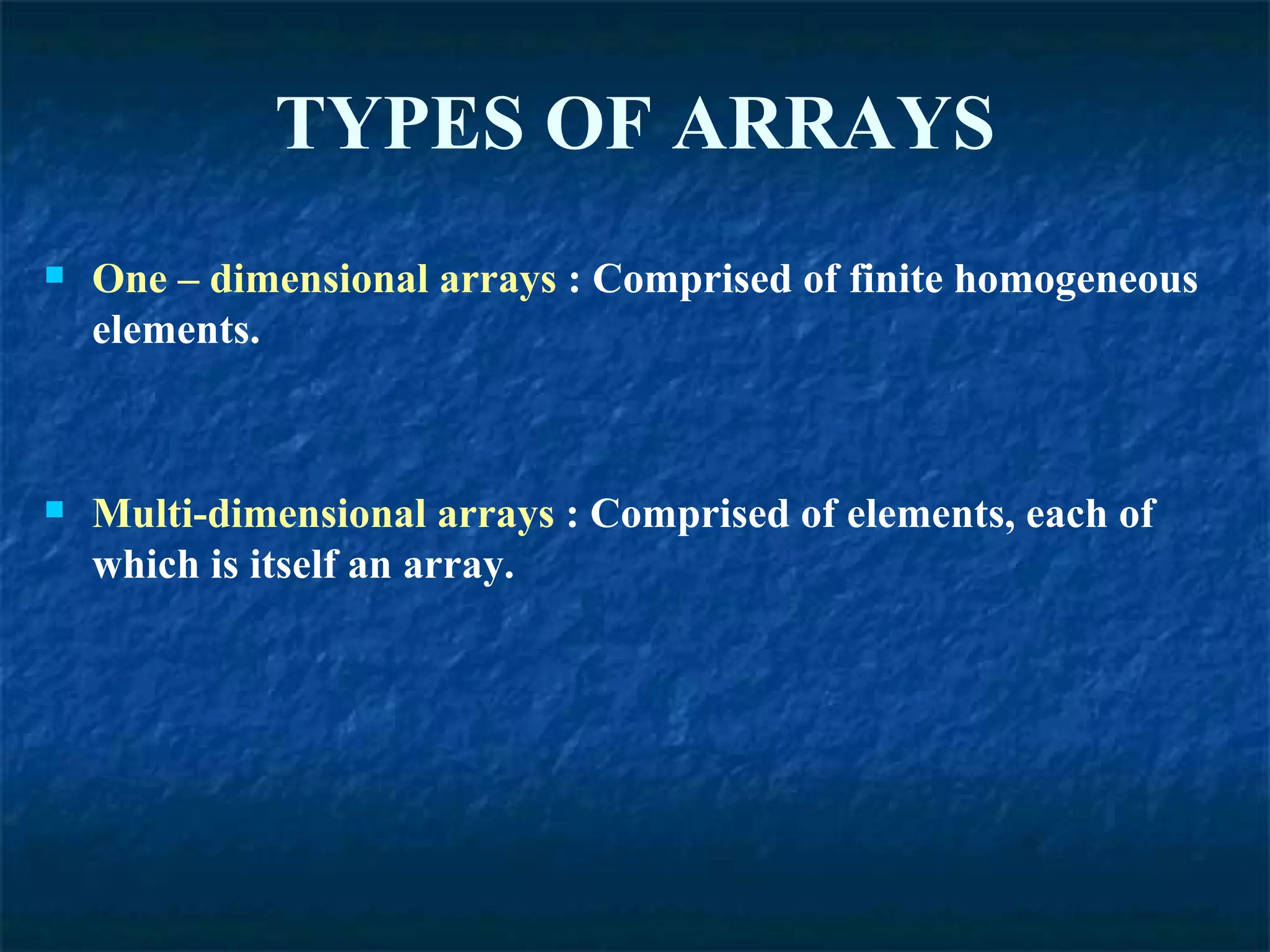
![One – Dimensional Array Single Dimensional Array: Element specified by single subscript Syntax: type array_name [ size ] Base type of array Name of array No. of elements that can be stored: Can be a integer value without the sign](https://image.slidesharecdn.com/1darrays-090930010004-phpapp01/75/1-D-Arrays-in-C-6-2048.jpg)
![Ex : MARKS [50] 0 1 2 3 49 MARKS [1] MARKS [3] . . .](https://image.slidesharecdn.com/1darrays-090930010004-phpapp01/75/1-D-Arrays-in-C-7-2048.jpg)
![ARRAY INITIALIZATION int list [ 5 ] ; // declaration int list [ 5 ] = { 10, 20, 30, 40, 50 } ; // declaration & initialization Can skip the size of an array in array initialization Elements of an array can be added or removed without changing array dimensions. E.g. float price [ ] = { 50.5, 63.97, 84.6, 779.8 };](https://image.slidesharecdn.com/1darrays-090930010004-phpapp01/75/1-D-Arrays-in-C-8-2048.jpg)
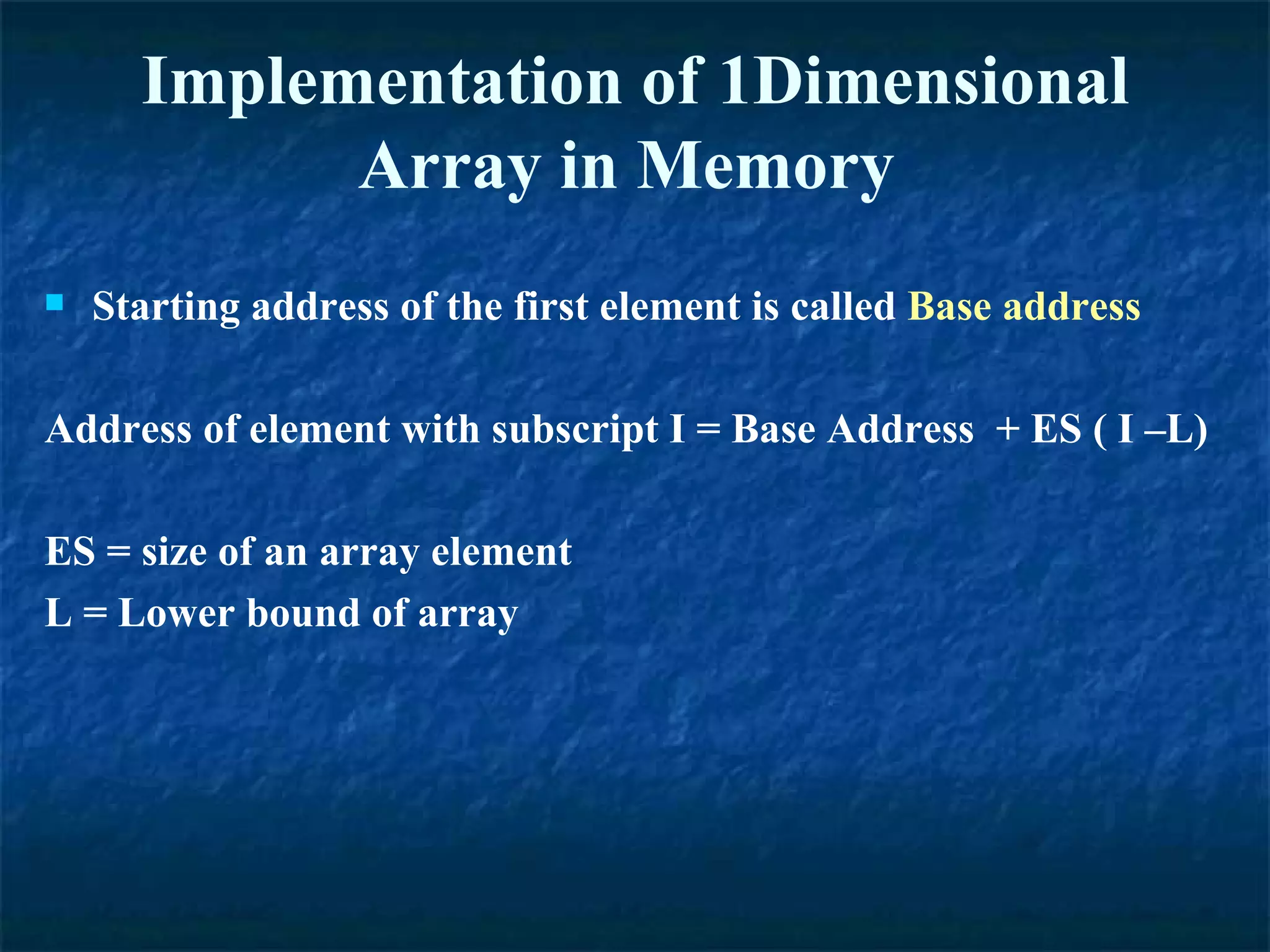
![Ex : What will be the adresses of element Marks[-1] and marks[2] of the following array with element size as 2 bytes and base address as 1000. Marks -3 -2 -1 0 1 2 3 1000](https://image.slidesharecdn.com/1darrays-090930010004-phpapp01/75/1-D-Arrays-in-C-10-2048.jpg)
![SOL : Address of Marks [I] = Base Address + ES ( I – L) L = -3 ES = 2 Base Address = 1000 Address of Marks[-1]= 1000 + 2(-1-(-3)) = 1000+ 2(2)= 1004 Address of Marks[2]= 1000 + 2(2-(-3)) = 1000+ 2(5)= 1010](https://image.slidesharecdn.com/1darrays-090930010004-phpapp01/75/1-D-Arrays-in-C-11-2048.jpg)
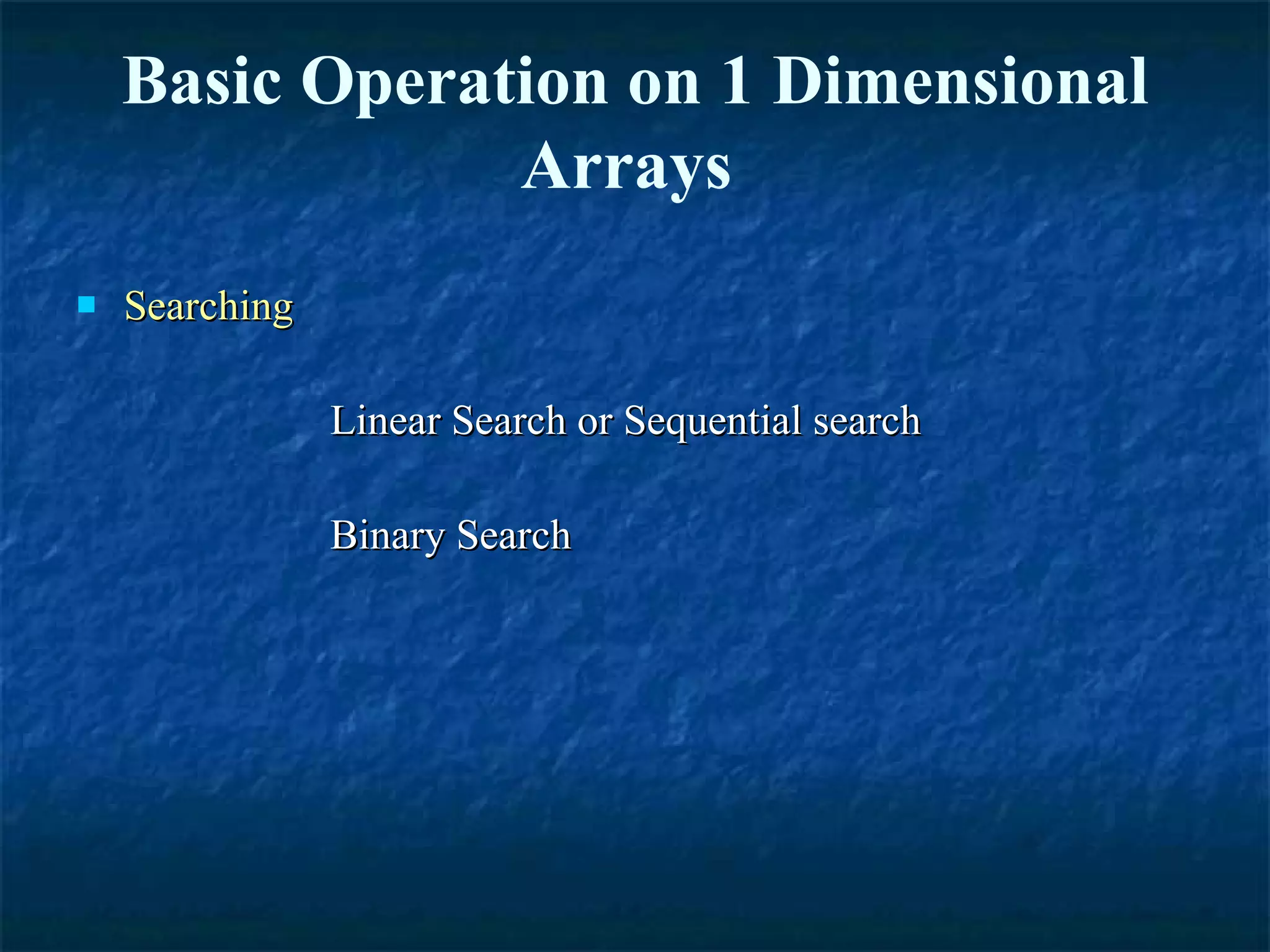
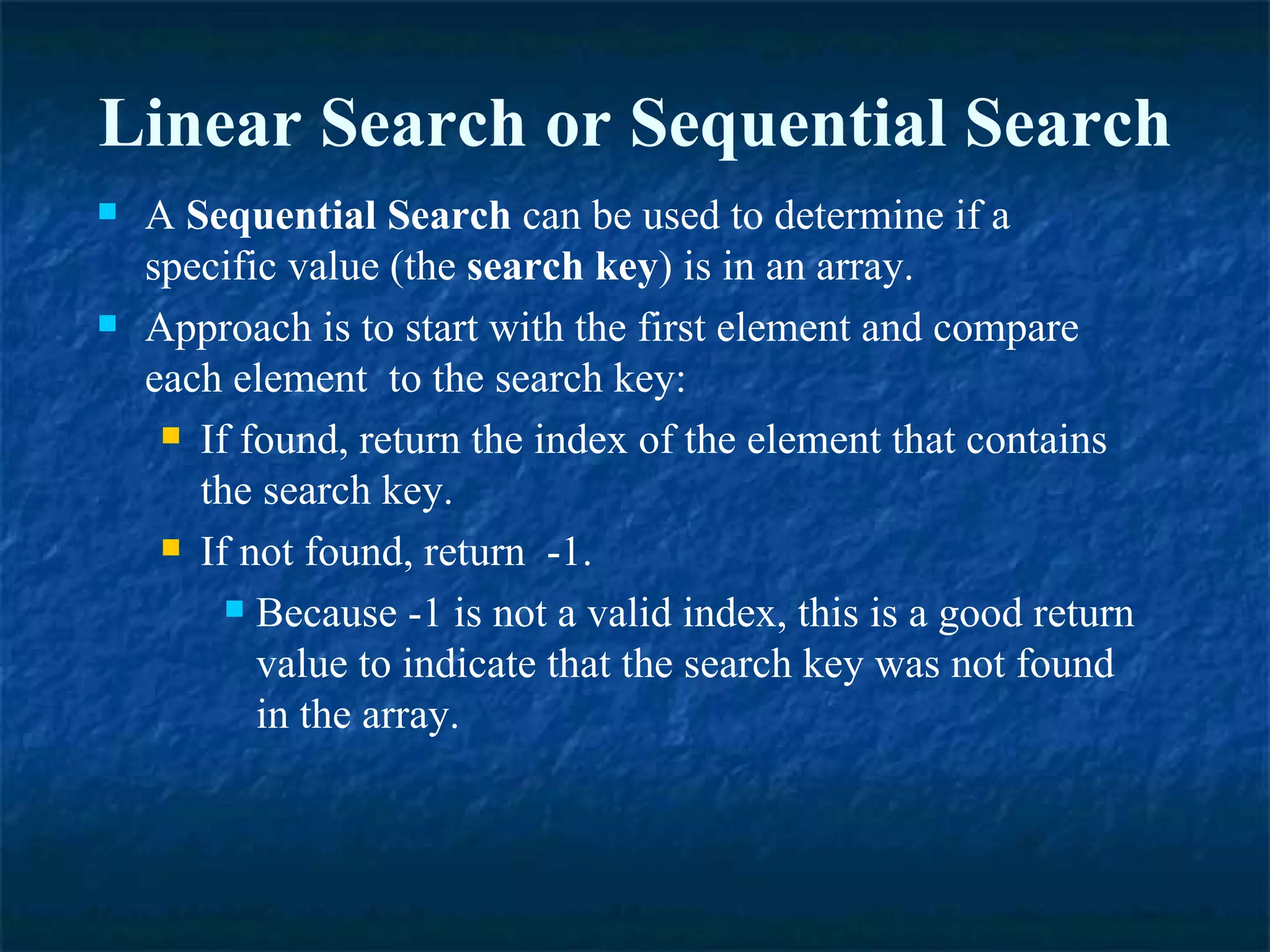
![Algorithm to perform a Sequential Search Step 1 : Set ctr = L Step 2 : Repeat steps 3 through 4 until ctr> U Step 3 : If AR[str] == ITEM then { print “ Search Successful” print ctr, “is the location of”, ITEM break } Step 4 : Ctr= ctr+1 Step 5 : If ctr > U then print “ Search Unsuccessful” Step 6 : END](https://image.slidesharecdn.com/1darrays-090930010004-phpapp01/75/1-D-Arrays-in-C-14-2048.jpg)
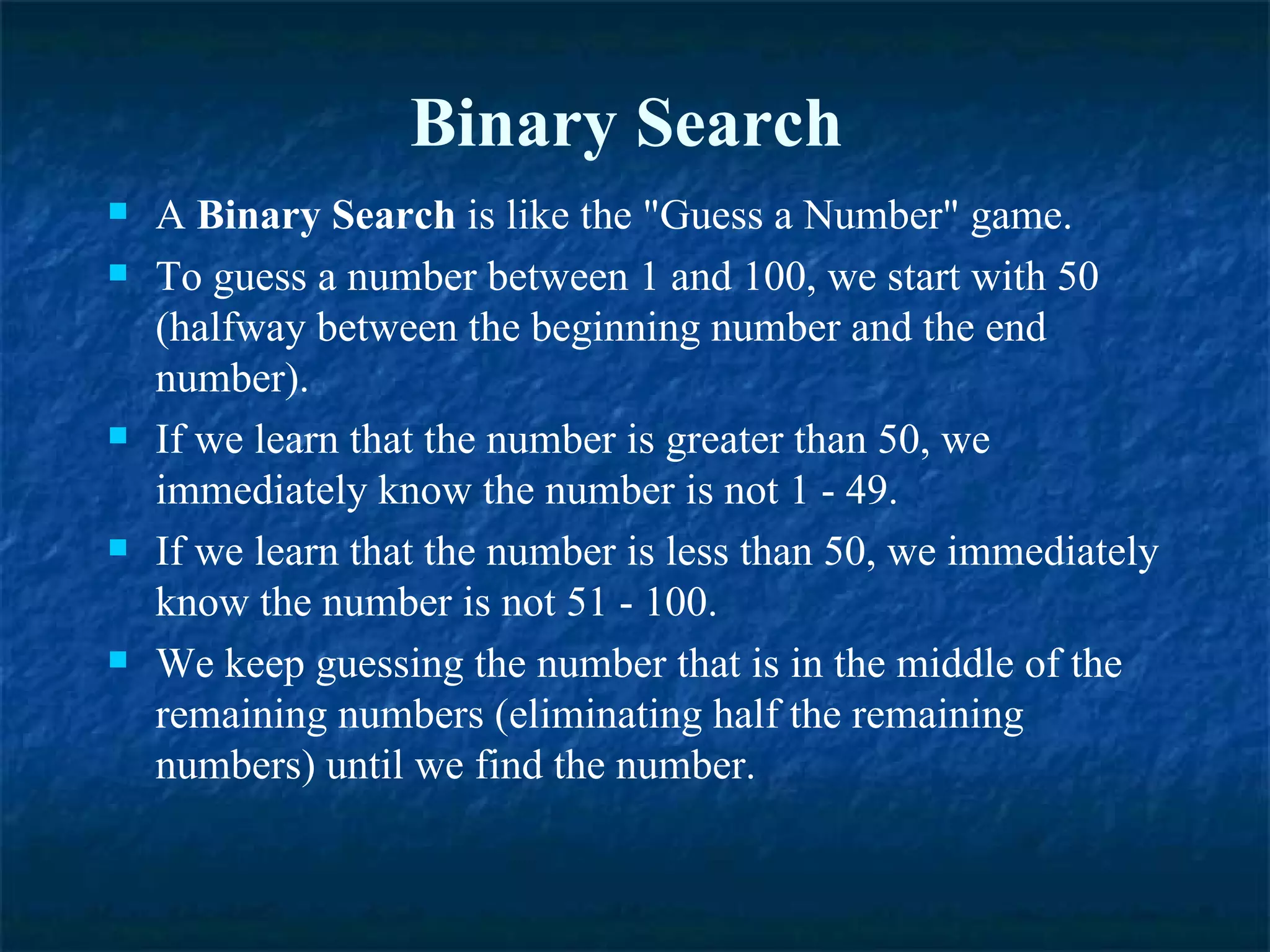
![Algorithm to perform Binary Search Step 1 : Set beg = L, last = U Step 2 : Repeat steps 3 through 6 until beg > last Step 3 : mid = INT((beg+last)/2) Step 4 : If AR[mid] == ITEM then { print “ Search Successful” print ITEM, “found at “,mid break } Step 5 : If AR[mid] < ITEM then beg = mid +1 Step 6 : If AR[mid] > ITEM then last = mid -1 Step 7 :if beg != last print “ Search Unsuccessful” Step 8 : END](https://image.slidesharecdn.com/1darrays-090930010004-phpapp01/75/1-D-Arrays-in-C-16-2048.jpg)
